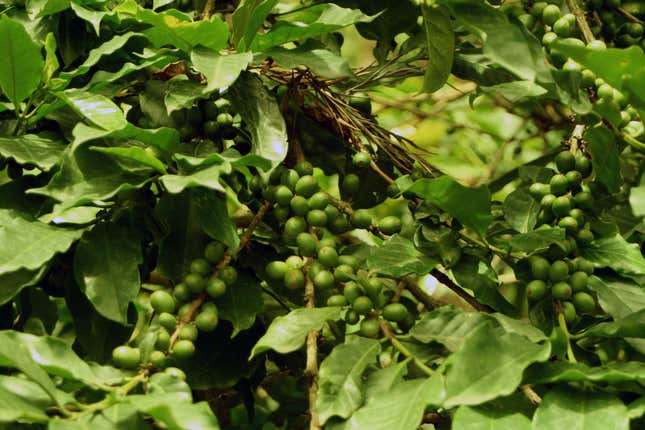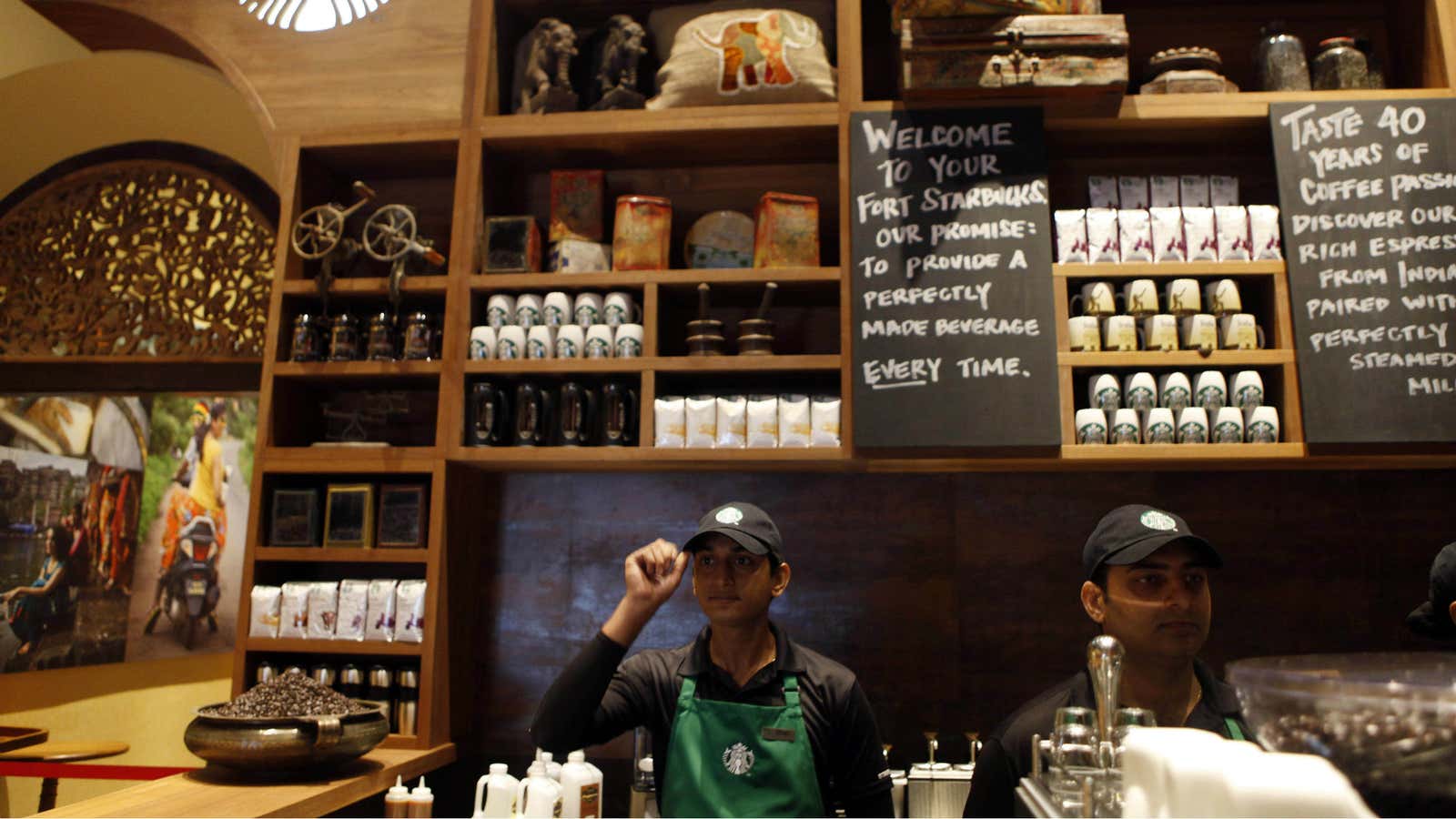When we first publicized that we’d be launching our coffee company, Blue Tokai Coffee Roasters, in December, we figured that the market for freshly roasted Indian coffee would be limited to Non Resident Indians and foreigners living and working in India. We were refreshingly surprised when most of the queries we received were from Indian residents around the country. Coffee sellers and consultants that we met with shared our view that it was an exciting time to be entering the coffee industry and, given the local demand for Indian coffee, it also seems to be a great time for another newcomer, Starbucks.
When Starbucks opened its first store in India a couple of weeks ago, an hour-long queue quickly materialized outside the Mumbai location, and CEO Howard Schultz vowed that India would be “one of the largest markets in the world for Starbucks.” Even though the queue seems to be growing, many are dismissing the enthusiasm for the company as being driven by the brand, rather than the coffee.
“I’m not sure if I’m excited about Starbucks coming to India. I’m expecting that they’ll adapt their menu to Indian tastes, like all the other chains resulting in more watery, milkier cappuccinos, oversweetened ‘cold coffees’ and Indian-spiced snacks, which is not exactly appealing to me,” said Mumbai web designer, Shefali Chad. “I don’t know if Starbucks coffee itself is the draw, it’s more the coffee shop—looks well designed and welcoming, nice place to sit with a book.”
Nevertheless, an important trend is afoot: as Indians are getting richer, their demand for coffee is increasing. Over the past 10 years, domestic coffee consumption has increased by 5.2% annually, a rate that is more than double the growth of India’s traditional beverage of choice, tea. In this respect, the country’s consumers are simply following the global pattern. If you look at coffee consumption across the world, 80% of the largest 25 consumers on a per capita basis are classified as high-income countries. In contrast, nearly two-thirds of the top tea consuming countries are either low or middle income. Part of the reason for the divide is cost, as more coffee is required for a cup as compared to the amount of tea leaves used in one serving. With the amount of money needed to buy enough coffee to make one cup, you could buy 2.5 cups’ worth of tea.
The other part is access. Apart from traditional filter coffee in the South, instant coffee is predominant in the rest of India, so it’s little surprise that people would prefer tea. However, India’s increasing affluence and a growing middle class has spurred a burgeoning café culture and the number of café’s in India has nearly tripled during the last 5 years. As people become more familiar with the specialty coffees served in cafés, they will increasingly look to recreate those drinks at home.

It’s only been fairly recent that the Indian coffee market has been liberalized. Historically, the government controlled the sale of all coffee in the country, with the bulk of the crop exported to Russia. Even though growers are now free to sell to whomever they please, almost all the high-quality beans are still being exported as domestic consumers are unaware that award-winning coffees are grown in India and the estates haven’t been able to successfully market themselves. As a result, we’ve found that growers are excited to work with us to bring their product to the Indian market. With people emailing us from places such as Thane, Jodhpur and Bikaner in addition to the major metro areas, we think there is a large amount of untapped demand for home-grown specialty beans.
Pooja Bhatia, a friend of ours in Delhi recounted that her younger cousin, who also lives in Delhi, had been spending a lot of her time and money in coffee shops and decided to purchase a drip coffee maker. Bhatia said she was very amused when she had to explain to her cousin that using Nescafe instant coffee in the coffee maker defied the purpose of the machine. In this nation of chai drinkers, we’ve come across coffee fans who range from being very informed to absolutely clueless but willing to learn.
Bhatia, critical of Starbucks’ entry into India also joked, “We imported an Italian politician and look how that turned out.”
